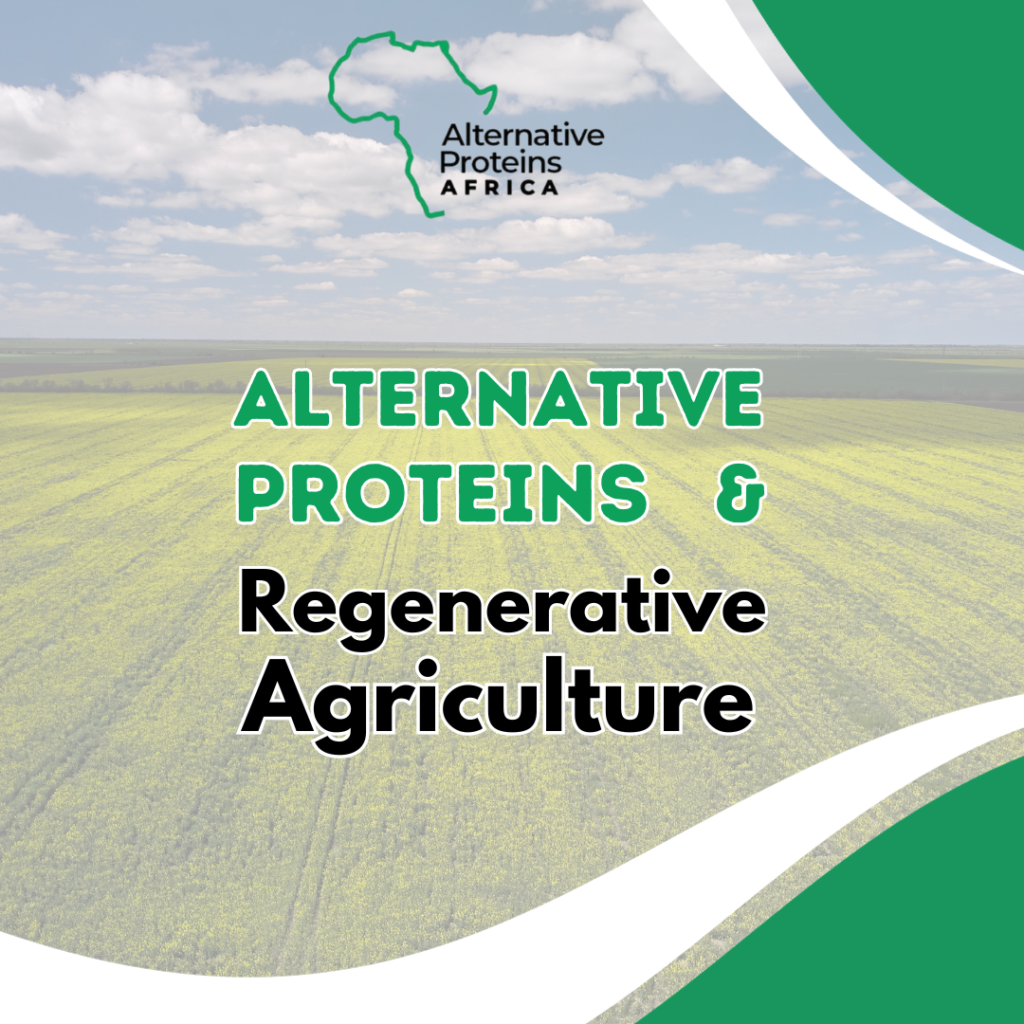
Introduction
Given the need to shift towards more plant-based protein diets, discussions regarding the conservation and sustainable use of natural resources, such as soil and water, are still vital. Of the various motivations for alternative protein sources, the sustainable utilization of the earth’s limited resources is key. Therefore, it is fitting to consider agricultural techniques that better protect the ecosystem while promoting more yields.
Regenerative agriculture presents an avenue for agriculture to be carried out more sustainably. The duo of regenerative agriculture and alternative proteins share similar goals of sustainable resource utilization, improved animal welfare, and reduction in the environmental impact of food production. Regenerative agriculture then offers a suitable complement to the field of alternative proteins.
What is Regenerative Agriculture?
Regenerative agriculture is a holistic and ecological approach to farming and managing land resources. Simply put, it is a farming approach that considers the conservation of nature’s resources and the enhancement of soil fertility. It seeks to improve conventional agriculture by optimizing the use of land, water, and other natural resources and addressing the problem of deforestation, soil exploitation, and degradation.
Regenerative agriculture utilizes different agricultural methods and techniques aimed at improving soil quality. These regenerative agricultural practices combine older and traditional practices with modern innovations. Some of these practices include:
- Crop rotation – a method of deliberately planting different crops on different parts of land in a definite and alternating order.
- Intercropping – an approach where multiple crops are planted together.
- Cover cropping – a practice that involves the planting of crops to protect soil fertility and quality.
- Integrated pest management – a practical and environmentally sensitive approach to controlling pests.
- Composting – the use of organic matter as fertilizers to enrich the soil.
- Reduced or no-till – this is to ensure minimal soil disturbance.
All these practices ensure that qualities such as soil health, soil nutrients, and soil structure and texture are preserved and improved over time.
In addition, it is important to note that regenerative agriculture’s potency lies in the proper and accurate combination of these various practices. In a study conducted in some regions in East Africa, it was discovered that when farmers applied different regenerative practices in combinations, there was an increase in crop yield and performance.
Benefits of regenerative agriculture
Regenerative agriculture offers the global food system many benefits, including improving alternative protein production. Plant-based proteins largely depend on the efficiency of the cropping system. Improving cropping techniques will ensure more yields and the availability of more protein options.
Regenerative agriculture can increase the availability of sustainable protein crops such as legumes. They are sustainable crops because they can likewise be used in the different regenerative agricultural practices listed above, making protein production go hand in hand with sustainability. Legumes are great fixers of atmospheric nitrogen, thus making them essential in crop rotation. They also improve soil fertility, facilitate water retention, and are used as cover crops.
Furthermore, regenerative agricultural practices are suitable in arid and semi-arid regions where the soil has been exposed to drought and overexploitation due to conventional agriculture. As a result, such regions can grow protein-rich crops. This makes regenerative agricultural practices an essential tool for East African farmers faced with drought.
Here are some other benefits of regenerative agriculture and they align with the need for alternative proteins:
Increase in the productivity of farmland
Through efforts to improve soil health and biodiversity, regenerative agriculture ensures that the farmlands are in a better state to produce improved-quality crops.
Reduction in the emission of greenhouse gas
Through the various practices of regenerative agriculture, carbon is captured and stored in the soil in a process known as carbon sequestration. This process reduces greenhouse gas emissions by reducing atmospheric CO2 and consequently mitigating climate change.
Reduction in the environmental impact of food production
Regenerative agriculture aims to reduce chemical inputs, reduce carbon emissions, and enhance biodiversity. This way, it contributes significantly to reducing the environmental footprint of food production.
Restoration of biodiversity
One way regenerative agriculture achieves this is the reduction in land used for agricultural purposes, thereby preserving the natural habitats of some species.
In conclusion, regenerative agriculture, like alternative proteins, is gaining attention as a valuable solution to solving major problems posed by conventional agriculture. Embracing its various practices in producing alternative proteins, particularly plant-based, will contribute some quota to the sustainable sourcing of foods while preserving the integrity of the soil. Companies dealing in the production of plant-based proteins can advocate that only crops grown under strict adherence to best agricultural practices are sought.

